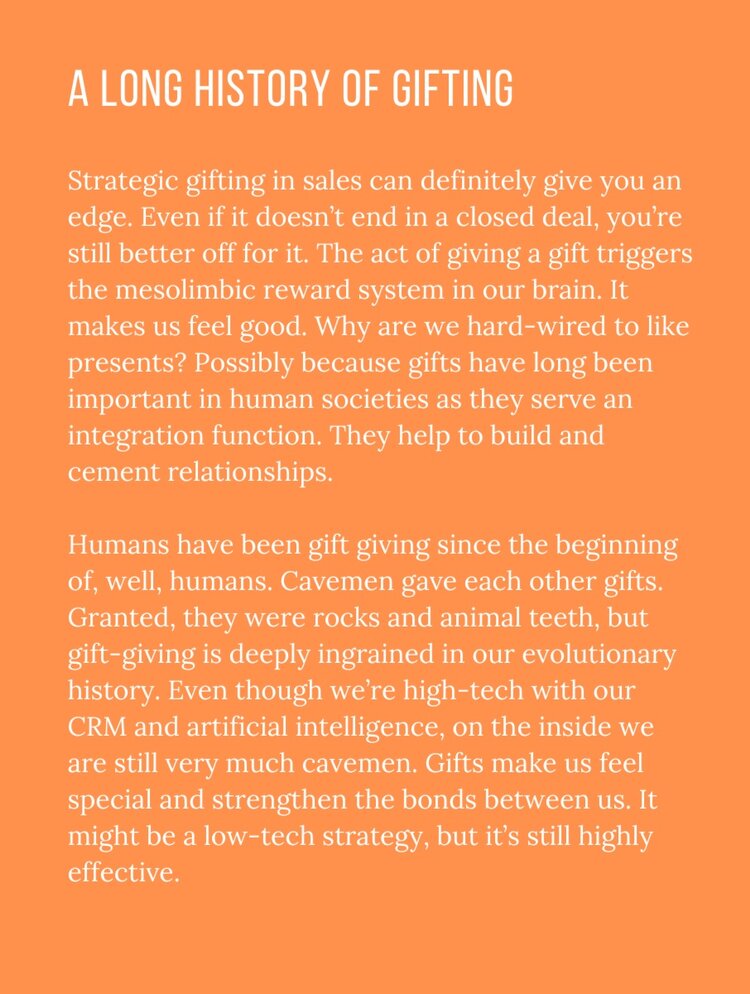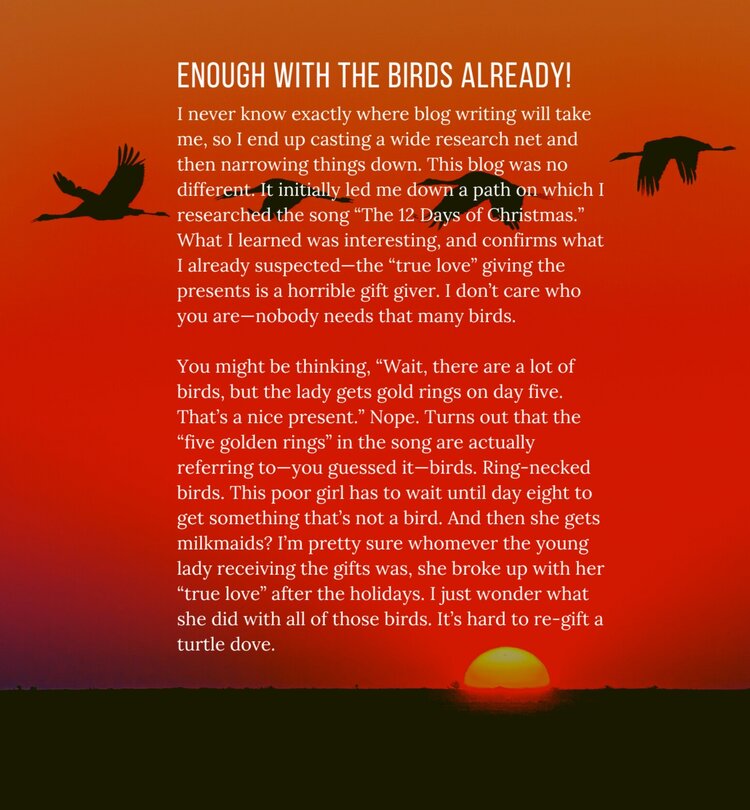Authenticity, rapport, and attention to detail: the best gifts don't fit in a box.
December 23, 2020
By Rachel Smith
The holidays are an obvious time to think about gifting. After reading this, though, I hope you’ll agree that anytime is a good time to think about gifting. I’m not talking about presents under the tree or toys for the kids—I’m talking about the act of gifting prospective and current clients in your role as a sales professional. Wisely-chosen personal and professional gifts will make you stand out in the increasingly automated world of sales.

Salespeople are often fighting against the stereotype of the disreputable used-car salesman who is willing to do and say anything to get you to buy a car. It is (as most stereotypes are) unfair, especially since most sales professionals have chosen their profession because they like to spend time with and genuinely help others.
Part of showing your authentic self, building rapport, and connecting with others (and destroying the negative stereotype) is showing that you’re listening to what your clients and prospects have to say. Gifting is a great way to show you’ve been paying attention. Did a prospect mention their favorite sports team? Is their dog interrupting a Zoom meeting? Details like these are opportunities for you to follow up in a more personal way. Share a news article about their team or send their dog a new toy. That is gifting.
I’m not saying your client wouldn’t enjoy tickets to an upcoming game (and if you can swing that, go for it), but gifting doesn’t have to be a grand gesture. It can be anything, whether digital or physical, that you send their way that’s personalized to them. If it highlights a connection between the two of you, even better.
Example: A note with a bag of pet treats.
“I noticed your adorable puppy on the call. Mine always tries to get in my lap at inopportune times, too. These chew treats are the only thing that keep my dog’s interest and they last for hours! They have been a lifesaver, especially when the boss calls 😃”
You spent a few dollars on dog treats. Your prospect is happily surprised, feels a connection to you as a pet owner, and will think about you every time he gives his dog one of those treats.
There are some organizations, for example state and local governments, that do not allow their employees to accept gifts. It’s important to be cognizant of this, as it can present an awkward situation. Nobody likes to reject someone’s present. Even if your prospect can’t accept physical gifts, that doesn’t mean you can’t send them an article that would interest them, write them a note, or let them know a store near you is closing and all of their Nationals gear is 75 percent off.
The fact that we’re all working from home can also make gifting a bit more challenging. What would have once been sent to their office now has nowhere to go as it would be creepy to send something to their home address (more on creepy later). What often works in this situation is a link and a gift card. Maybe you can’t send the special dog treats, but you can provide a link and send an Amazon or PetSmart gift card via email.
At Maestro, we like to say that sales is like physics—a deal in motion stays in motion. If a deal is slowing down, it’s a great time to gift. An average salesperson might email and let their prospect know that they’re just following up on the previous meeting, but a savvy sales professional would send along a helpful article about something discussed at the last meeting, or a heartfelt note congratulating the prospect on some exciting company news. You’re much more likely to get a response to an article or a note than to a generic follow-up, and this gets your deal moving again.
There really isn’t a wrong time to gift. In terms of what to gift, it will depend on the person and the circumstances, but keep two things in mind. First, it needs to be personal. Don’t, for example, send a Starbucks gift card to all of your prospects. Some of them don’t drink coffee. In order to build on your relationship, the gift needs to be thoughtful.

The situation we find ourselves in is ironic. We know that everyone likes personalization, so we have implemented new technologies to make personalization faster and easier. You likely have a tool that can track which emails have been opened and send another accordingly. We have essentially depersonalized personalization. The good news for you in this situation is that something as simple as a handwritten note or a thoughtfully-selected article can make you stand out from the crowd.
The second thing to keep in mind is, as we mention in our blog on researching for B2B sales discovery meetings, don’t be creepy. If you see on LinkedIn that someone is a Duke alum, it would be completely appropriate to send them an article about this year’s basketball team with a note that says, “I thought you would enjoy this since it projects your Blue Devils will do well this season.”
It would be inappropriate to dig around on their Facebook page for more personal information. Maybe you figured out that they have two children and by reading through comments know their names and think, “personalized Duke hats for these kids seems like a great idea.” DON’T DO IT. You’ve crossed the line into Creepytown. It will definitely make you stand out from the crowd, but not in a good way. Show that you’re listening to them, not that you’re watching them Big Brother-style.
Gifting is an effective strategy because it shows prospects that you’re paying attention and that you care. Nobody wants to feel like just another sale. That stereotypical used-car salesman doesn’t remember where someone went to school, that this person’s son plays lacrosse, or that somebody’s rescue dog goes nuts for squeaky toys. But you do. Because you are a sales professional. You care, which is why you’re doing this job in the first place.
Reach out to mastery@maestrogroup.co and give yourself the gift of higher sales.
Get the Maestro Mastery Blog, straight to your inbox.